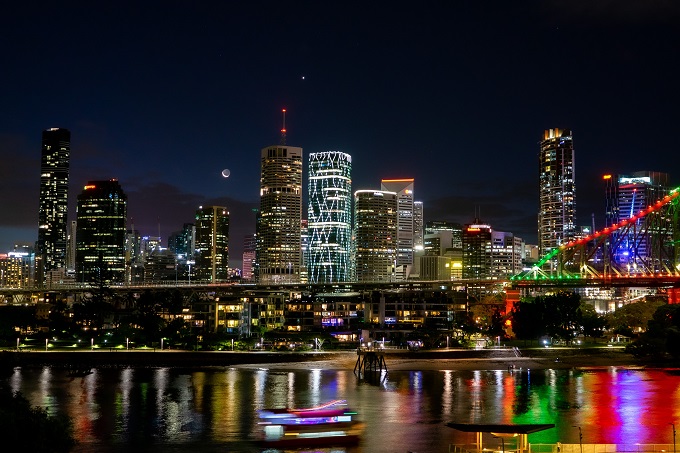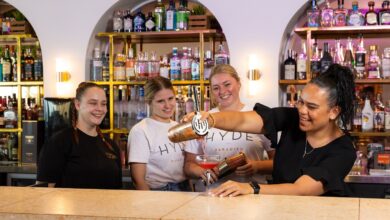
Tentative sector recovery underway, COVID, challenges remain
Brisbane sector recovery predicted by 2023
A new report from Deloitte confirms that while Australia has achieved so much in combatting the COVID-19 pandemic, success on the health and economic fronts has imposed a particularly heavy burden on the country’s tourism and hotel sectors.
Deloitte Access Economics Tourism and Hotel Market Outlook, Deloitte Access Economics partner and Deloitte national tourism leader, Adele Labine-Romain, said: “These have been, and they absolutely remain, testing and uncertain times for our tourism and hotel operators who employ so many people and who are so important to ‘brand Australia.
They were the first to be impacted by measures introduced by governments in response to COVID and will be among the last to recover.
“Domestic demand will have to deliver in this recovery, with international tourism unlikely to return in a meaningful way until at least 2022, with the exception of the just announced travel bubble with New Zealand in the first instance, and talk of the same in parts of Asia and the Pacific down the track.
“The recovery will also be affected by capacity challenges, including aviation capacity, tourism business viability in the short-to-medium term, and the loss of human capital, along with consumer confidence and travel sentiment.
“And when international travel restrictions lift, Australia will face an extremely competitive landscape with countries looking to reactivate their tourism industries as part of the recovery from the impacts of the pandemic.”
Prior to COVID, growth in Australia’s tourism sector was outpacing growth in the wider economy. From 2009 to 2019, tourism expenditure in Australia saw average annual growth of 6 percent, and while international arrivals growth had recently moderated to 2 percent, 2019 saw a record high of 9.5 million overseas visitors arrive in Australia spending $45 billion.
“And then COVID-19 hit in March 2020,” said Labine-Romain. “International visitor arrivals globally fell by one billion, or 74 percent, and the Asia Pacific region suffered the most.
“In Australia, inbound international and interstate travel fell by 81 percent and 65 percent, respectively. The impact of the decline is dramatic – 7.6 million fewer international arrivals and 45 million fewer domestic overnight trips, resulting in a loss of around $85 billion in visitor spend.”
On the outlook…
“The post-COVID recovery for Australian tourism will depend on a range of factors, including local and global econbomic conditions, ongoing government responses to managing the health crisis, travel restrictions and consumer confidence and behaviour,” Labine-Romain said.
“There is evidence of recovery for the domestic travel sector through the first quarter of 2021 via pent-up demand following the travel restrictions experience in 2020, and with encouragement by tourism agencies across the country to holiday in Australia.
“Should the pandemic remain largely in control – at least from an Australian perspective – domestic overnight trips are forecast to grow to 113 million by the end of 2021, just under 2019 levels, and to 134 million trips by 2023, a 14 percent increase on 2019.
“On the international front, the lifting of travel restrictions and the development and adoption of vaccine passports and other facilitating measures, along with consumer sentiment, will drive the return of international visitors.
“International travel is not expected to recover to near pre-COVID levels until sometime in 2023, with current projections of international arrivals 7 percent higher that year than 2019. This will be the result of pent-up demand stimulating strong demand in 2022 through to 2023.”
What about the accom sector?
In 2019, Australia’s tourism sector welcomed 126 million overnight visitors – 8.8 million international and 117 million domestic. They spent over 690 million visitor nights across country, representing growth of 7 percent over 2018, and nearly one in five visitor nights was spent in a hotel.
“The impacts of COVID-19 have been as equally stark for hotel operators. In 2020, travel restrictions led to hotel occupancy plunging to a low of 45 percent, a decline of almost 30 points on 2019,” Labine-Romain said.
The outlook?
“Despite the devastating operating climate in 2020, over 5,000 new hotel rooms were added to the market in 2020. And looking ahead, there is the potential that more than 32,000 new rooms in likelihood adjusted terms will be added to the national room stock, with around 40 pecent of these anticipated to open in 2022.
“With plenty of new stock, and even more in the pipeline, hoteliers will face considerable headwinds with average occupancy rates across the major markets covered in the report forecast to remain considerably lower than in recent years, but recovering to 95 percent of 2019 occupancy levels in the final year of the forecast horizon,” Labine-Romain said.
“This is influenced by the new room pipeline, but also in the anticipated slow recovery of business travel and the stepped return of international visitors.
“We expect the pace of recovery to be different across the city markets. Brisbane and Perth are likely to see occupancy rates returning to 2019 levels by 2023, while the Gold Coast, Adelaide, Hobart, Tropical North Queensland and Western Sydney are expected to be slower to recover, largely due to their greater exposure to either business travel or international tourists, or both.
“Room rates across the country held up better than occupancy rates in 2020, finishing the year down only 12 percent over 2019. Rates are also expected to improve more quickly than occupancy levels, forecast to return to 2019 levels by 2023 with some markets achieving the milestone even sooner.
“The corporate travel segment will clearly be critical in terms of the recovery, and markets where corporate travellers represent a relatively larger share of demand will face significant challenges, paticularly as so many businesses big and small have settled into people connecting via technology.
“In the short to medium term therefore, hotels in the major cities will need to look at ways to encourage a greater volume of domestic holidaymakers to fill the gap from business travellers.”

AccomNews is not affiliated with any government agency, body or political party. We are an independently owned, family-operated magazine.







